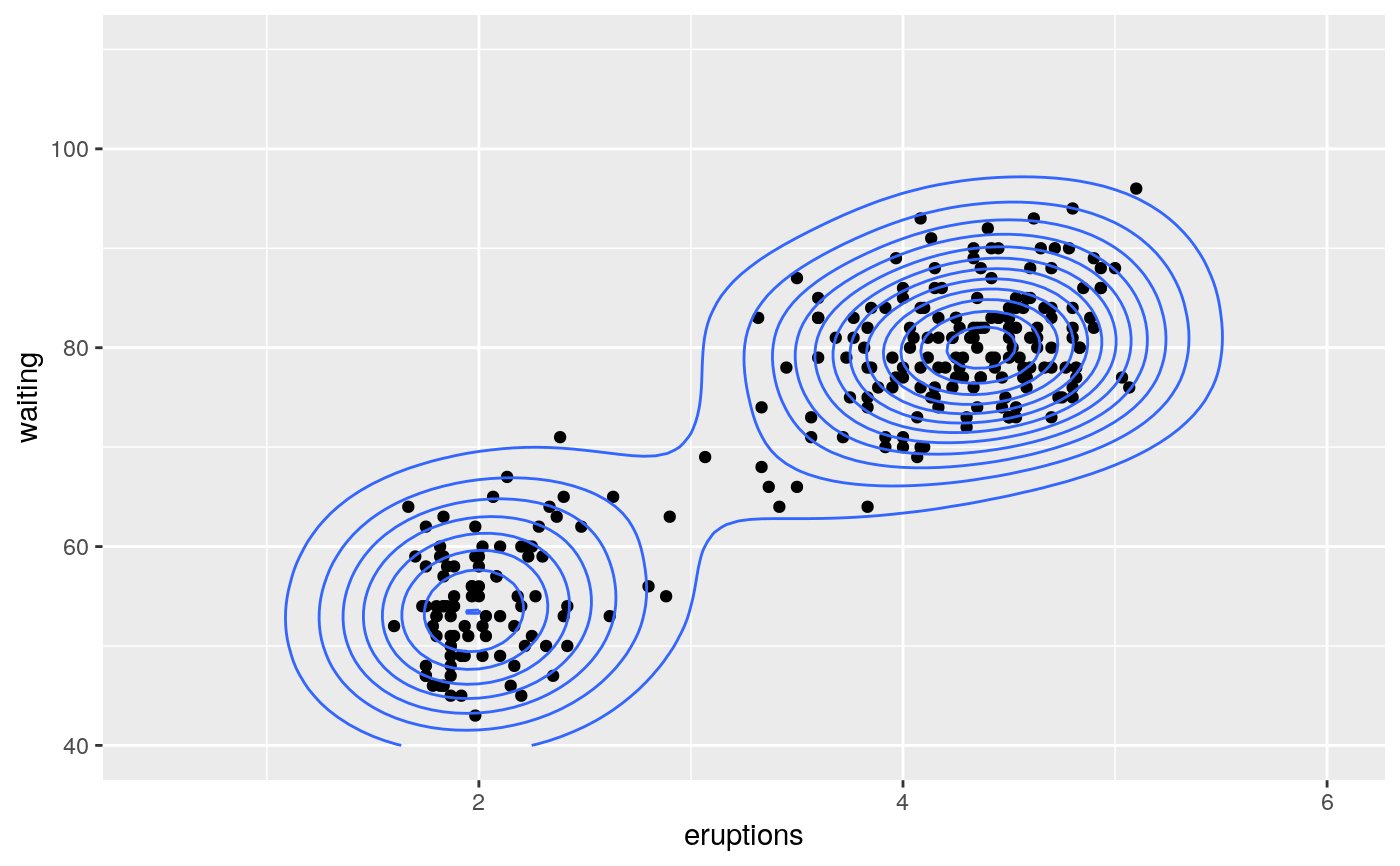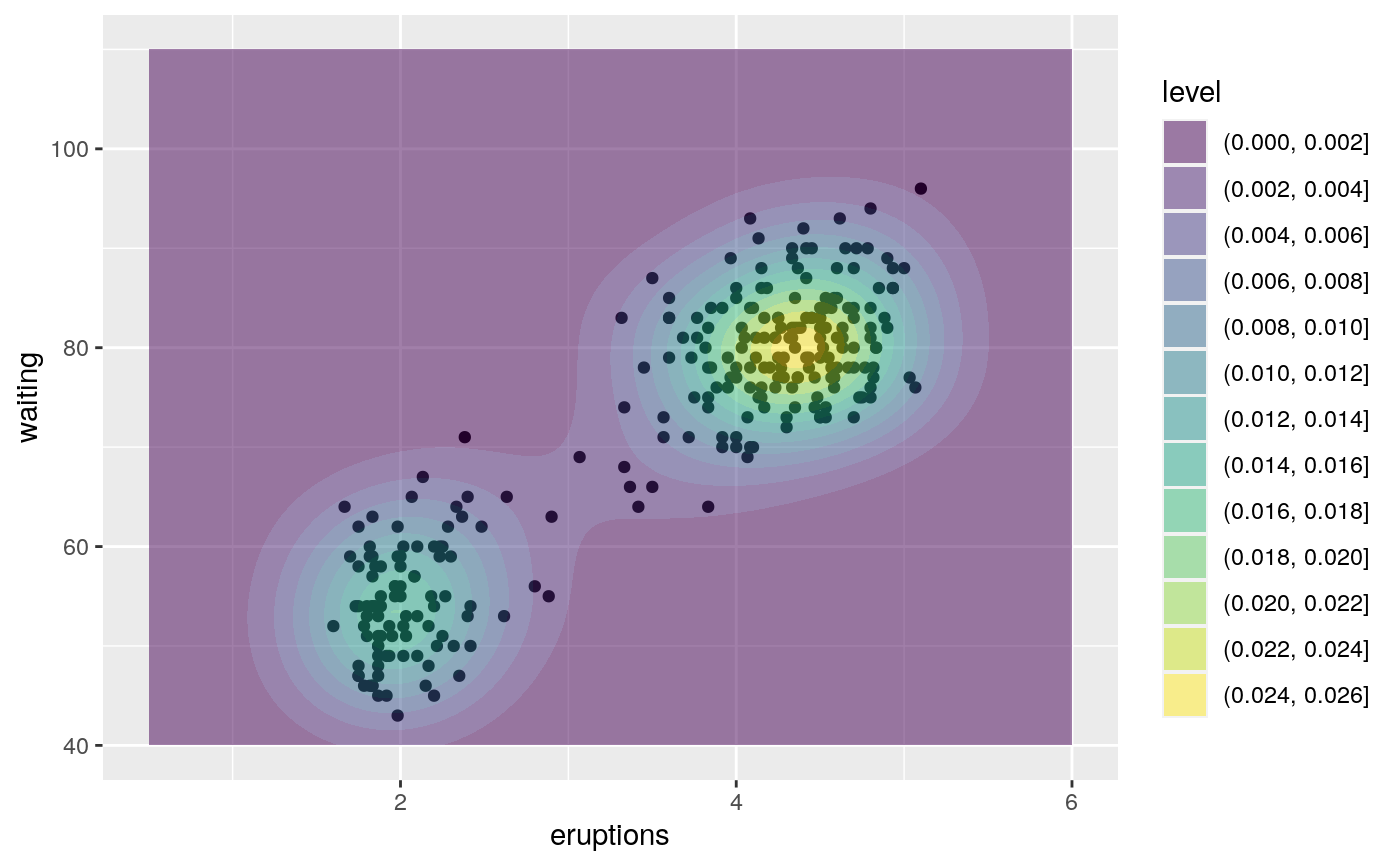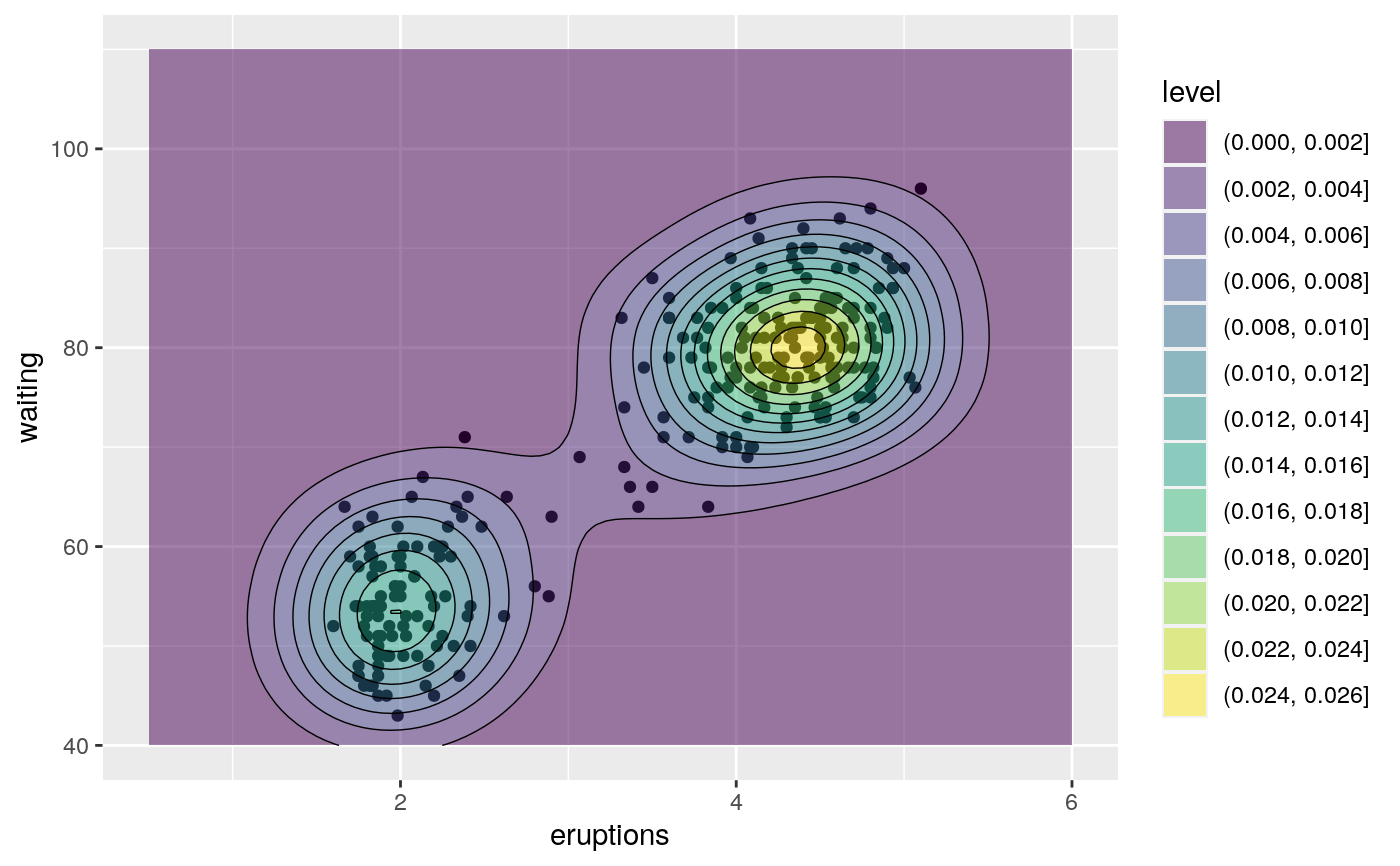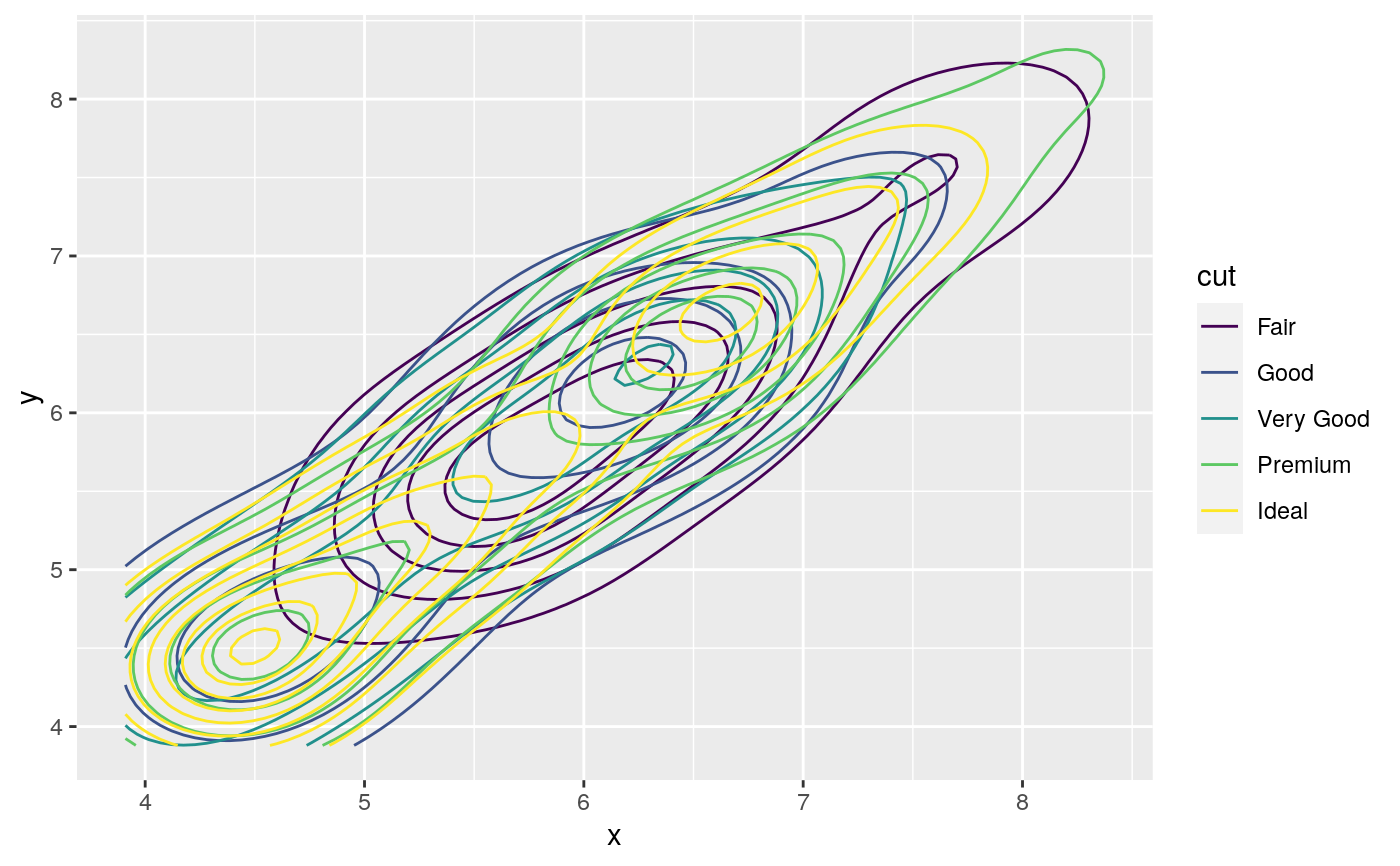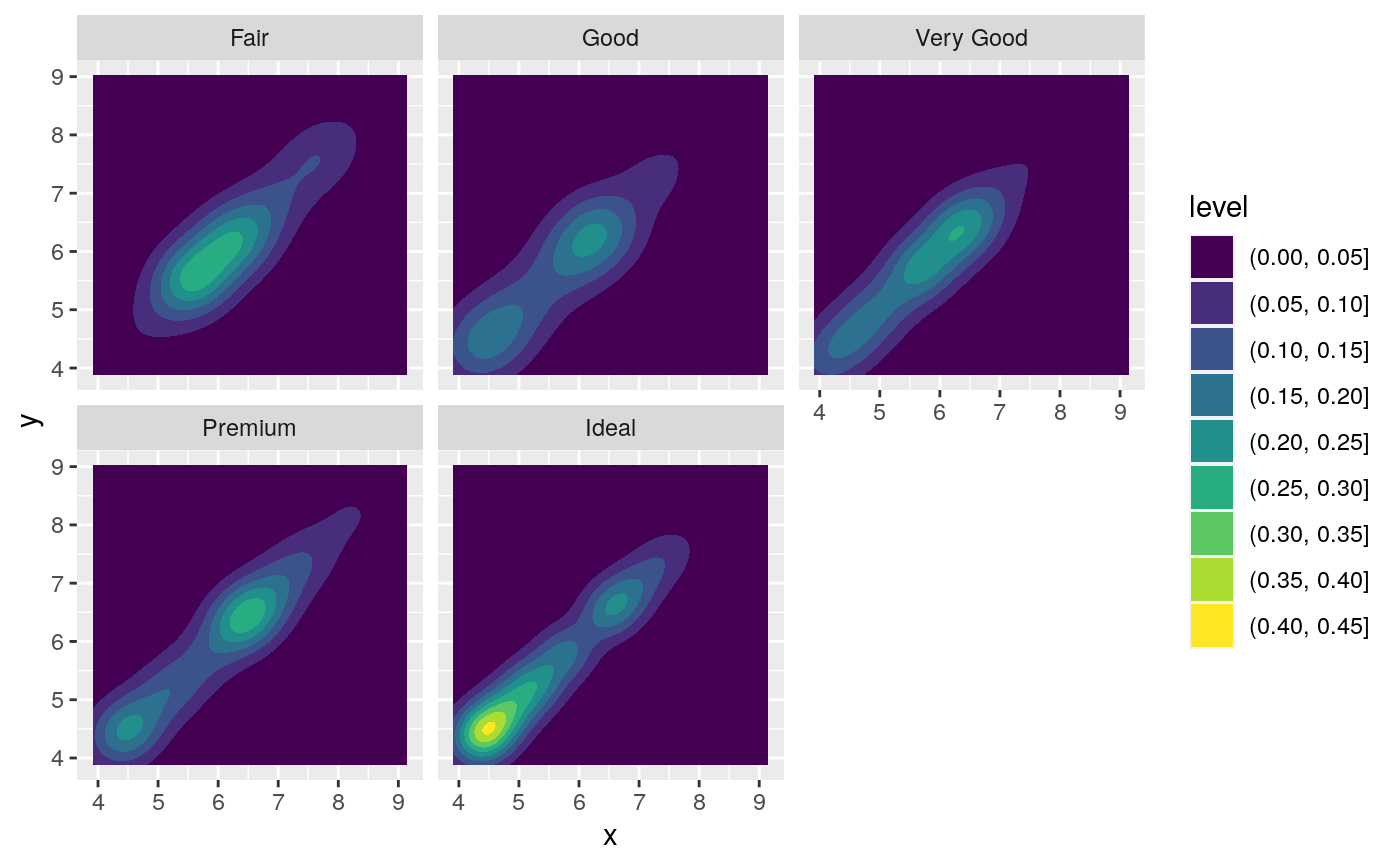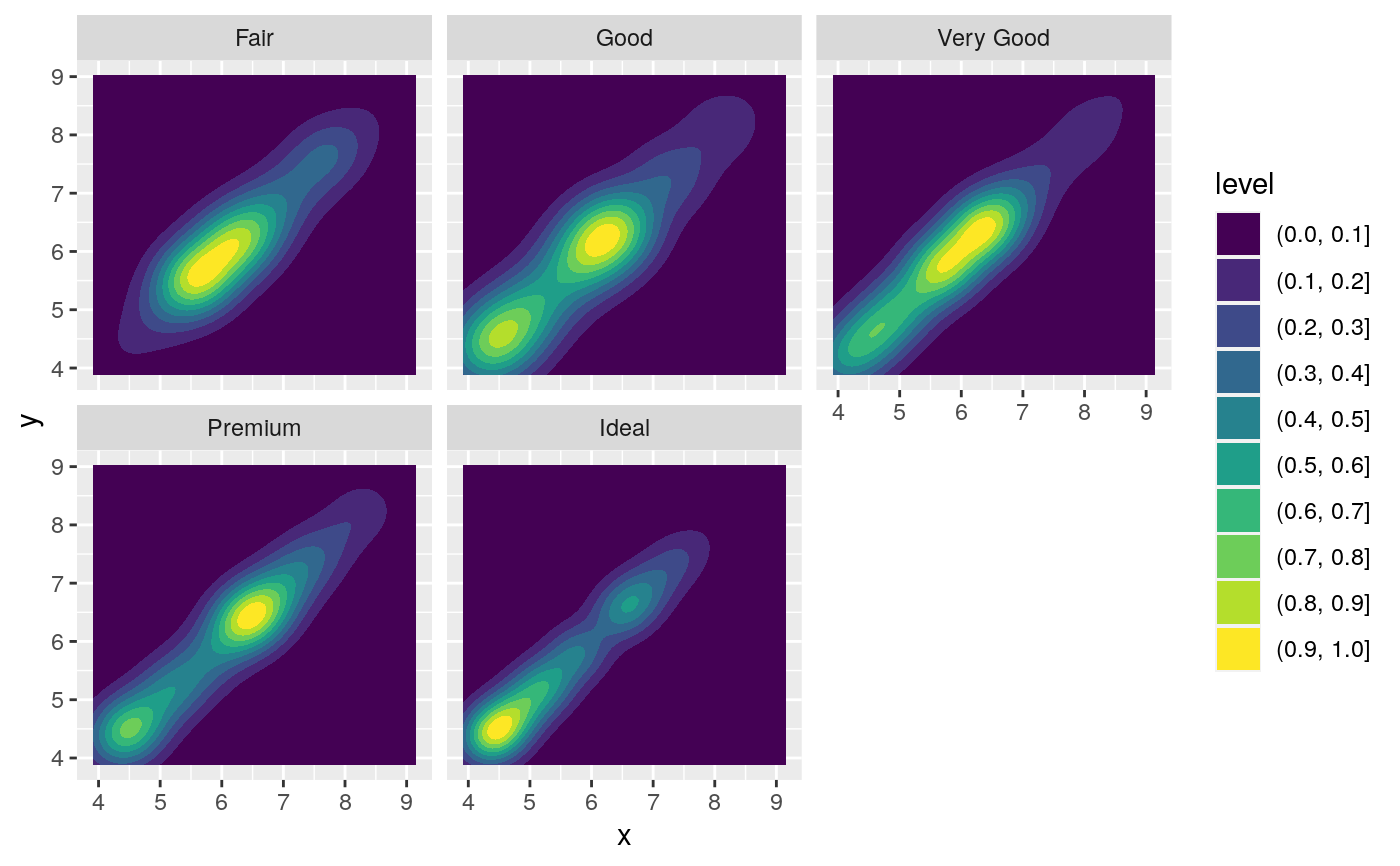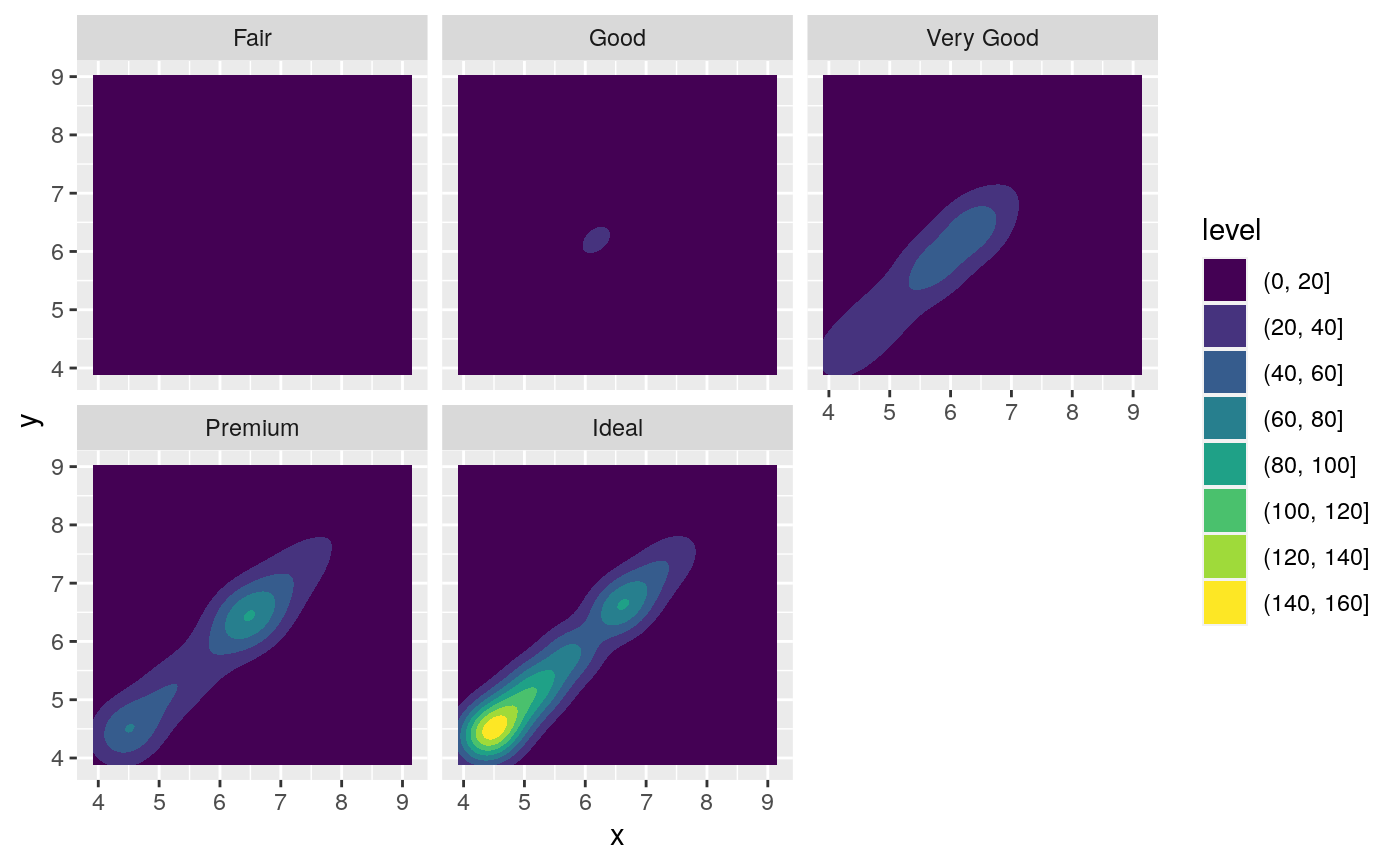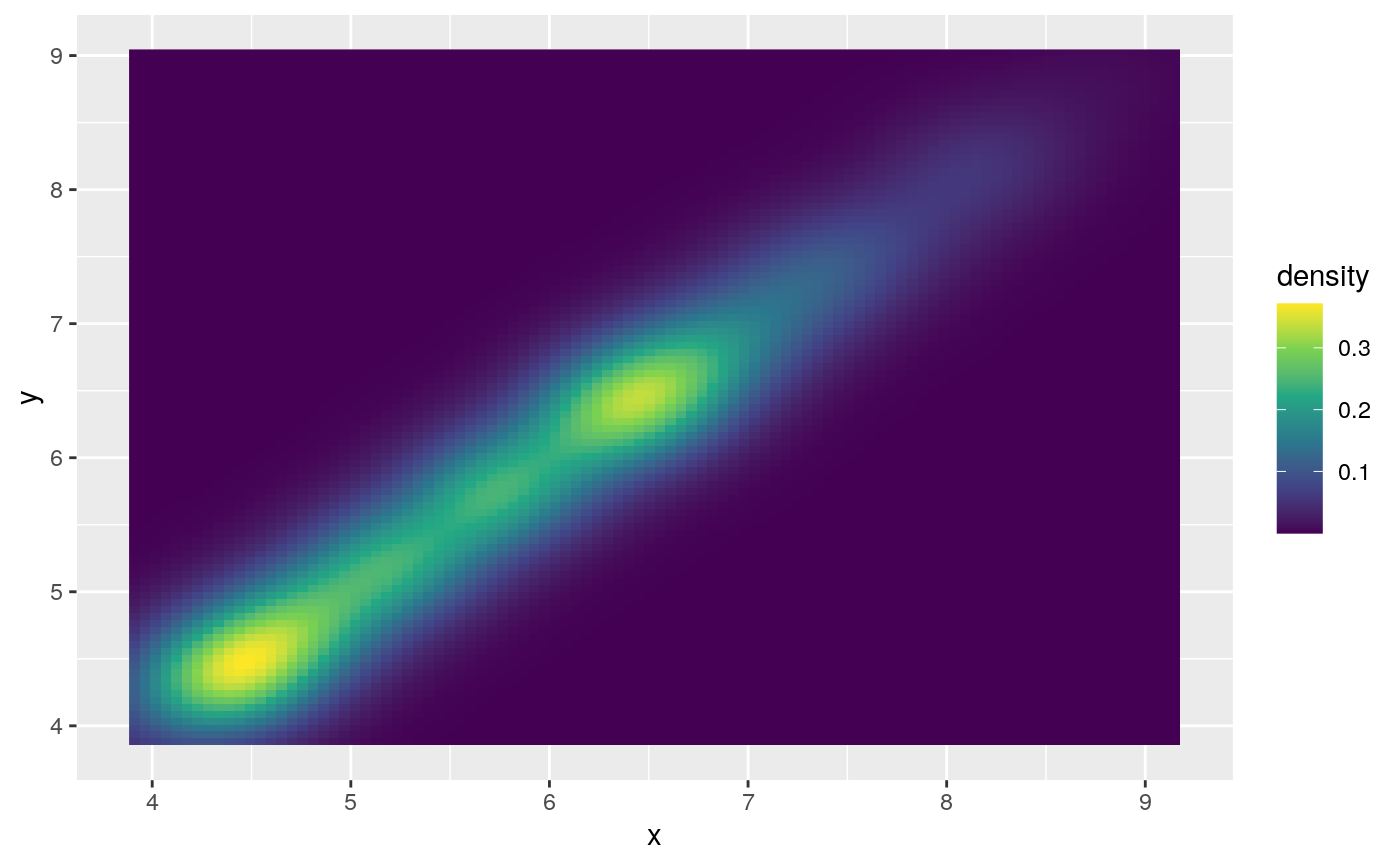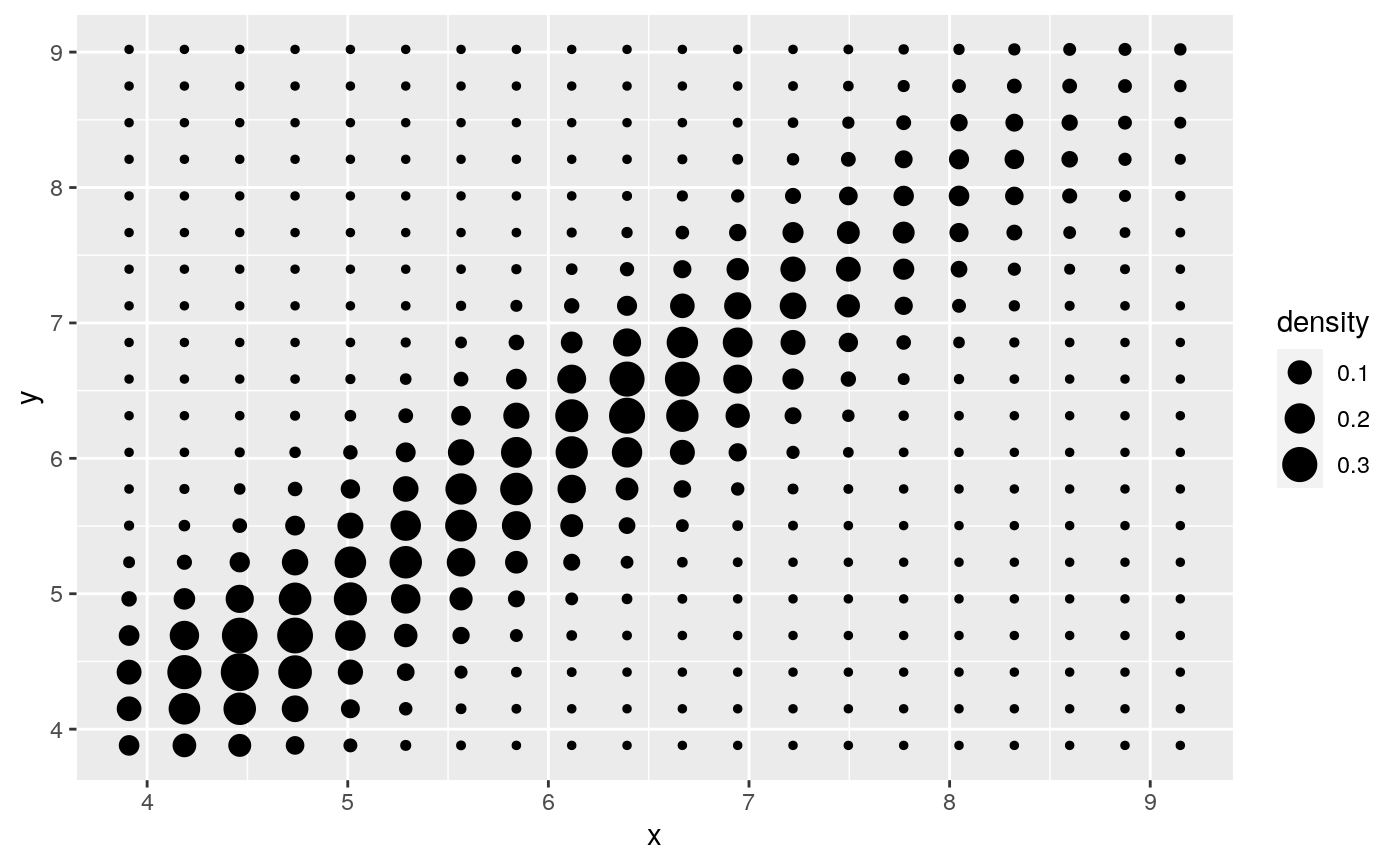Contours of a 2D density estimate
Source:R/geom-density2d.r, R/stat-density-2d.r
geom_density_2d.RdPerform a 2D kernel density estimation using MASS::kde2d() and
display the results with contours. This can be useful for dealing with
overplotting. This is a 2D version of geom_density(). geom_density_2d()
draws contour lines, and geom_density_2d_filled() draws filled contour
bands.
geom_density_2d( mapping = NULL, data = NULL, stat = "density_2d", position = "identity", ..., contour_var = "density", lineend = "butt", linejoin = "round", linemitre = 10, na.rm = FALSE, show.legend = NA, inherit.aes = TRUE ) geom_density_2d_filled( mapping = NULL, data = NULL, stat = "density_2d_filled", position = "identity", ..., contour_var = "density", na.rm = FALSE, show.legend = NA, inherit.aes = TRUE ) stat_density_2d( mapping = NULL, data = NULL, geom = "density_2d", position = "identity", ..., contour = TRUE, contour_var = "density", n = 100, h = NULL, adjust = c(1, 1), na.rm = FALSE, show.legend = NA, inherit.aes = TRUE ) stat_density_2d_filled( mapping = NULL, data = NULL, geom = "density_2d_filled", position = "identity", ..., contour = TRUE, contour_var = "density", n = 100, h = NULL, adjust = c(1, 1), na.rm = FALSE, show.legend = NA, inherit.aes = TRUE )
Arguments
| mapping | Set of aesthetic mappings created by |
|---|---|
| data | The data to be displayed in this layer. There are three options: If A A |
| position | Position adjustment, either as a string, or the result of a call to a position adjustment function. |
| ... | Arguments passed on to binsNumber of contour bins. Overridden by binwidthThe width of the contour bins. Overridden by breaksNumeric vector to set the contour breaks.
Overrides |
| contour_var | Character string identifying the variable to contour
by. Can be one of |
| lineend | Line end style (round, butt, square). |
| linejoin | Line join style (round, mitre, bevel). |
| linemitre | Line mitre limit (number greater than 1). |
| na.rm | If |
| show.legend | logical. Should this layer be included in the legends?
|
| inherit.aes | If |
| geom, stat | Use to override the default connection between
|
| contour | If |
| n | Number of grid points in each direction. |
| h | Bandwidth (vector of length two). If |
| adjust | A multiplicative bandwidth adjustment to be used if 'h' is
'NULL'. This makes it possible to adjust the bandwidth while still
using the a bandwidth estimator. For example, |
Aesthetics
geom_density_2d() understands the following aesthetics (required aesthetics are in bold):
xyalphacolourgrouplinetypesize
Learn more about setting these aesthetics in vignette("ggplot2-specs").
geom_density_2d_filled() understands the following aesthetics (required aesthetics are in bold):
xyalphacolourfillgrouplinetypesizesubgroup
Learn more about setting these aesthetics in vignette("ggplot2-specs").
Computed variables
stat_density_2d() and stat_density_2d_filled() compute different
variables depending on whether contouring is turned on or off. With
contouring off (contour = FALSE), both stats behave the same, and the
following variables are provided:
densityThe density estimate.
ndensityDensity estimate, scaled to a maximum of 1.
countDensity estimate * number of observations in group.
nNumber of observations in each group.
With contouring on (contour = TRUE), either stat_contour() or
stat_contour_filled() (for contour lines or contour bands,
respectively) is run after the density estimate has been obtained,
and the computed variables are determined by these stats.
Contours are calculated for one of the three types of density estimates
obtained before contouring, density, ndensity, and count. Which
of those should be used is determined by the contour_var parameter.
See also
geom_contour(), geom_contour_filled() for information about
how contours are drawn; geom_bin2d() for another way of dealing with
overplotting.
Examples
m <- ggplot(faithful, aes(x = eruptions, y = waiting)) + geom_point() + xlim(0.5, 6) + ylim(40, 110) # contour lines m + geom_density_2d()# \donttest{ # contour bands m + geom_density_2d_filled(alpha = 0.5)# contour bands and contour lines m + geom_density_2d_filled(alpha = 0.5) + geom_density_2d(size = 0.25, colour = "black")set.seed(4393) dsmall <- diamonds[sample(nrow(diamonds), 1000), ] d <- ggplot(dsmall, aes(x, y)) # If you map an aesthetic to a categorical variable, you will get a # set of contours for each value of that variable d + geom_density_2d(aes(colour = cut))# If you draw filled contours across multiple facets, the same bins are # used across all facets d + geom_density_2d_filled() + facet_wrap(vars(cut))# If you want to make sure the peak intensity is the same in each facet, # use `contour_var = "ndensity"`. d + geom_density_2d_filled(contour_var = "ndensity") + facet_wrap(vars(cut))# If you want to scale intensity by the number of observations in each group, # use `contour_var = "count"`. d + geom_density_2d_filled(contour_var = "count") + facet_wrap(vars(cut))# If we turn contouring off, we can use other geoms, such as tiles: d + stat_density_2d( geom = "raster", aes(fill = after_stat(density)), contour = FALSE ) + scale_fill_viridis_c()# Or points: d + stat_density_2d(geom = "point", aes(size = after_stat(density)), n = 20, contour = FALSE)# }
